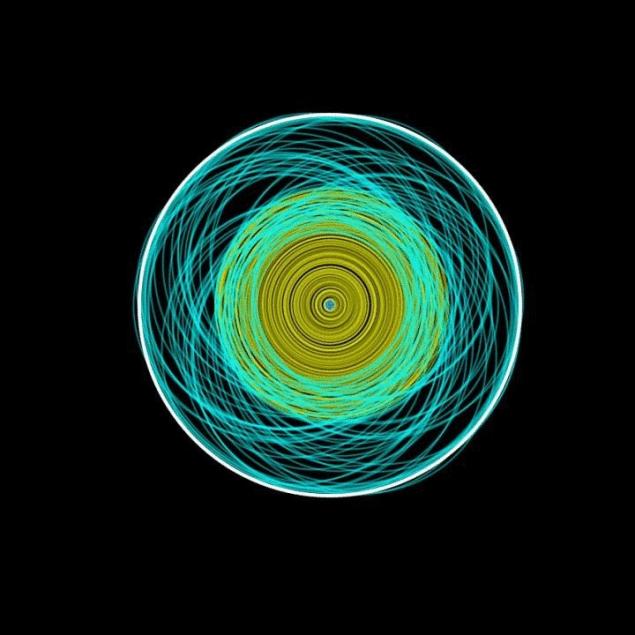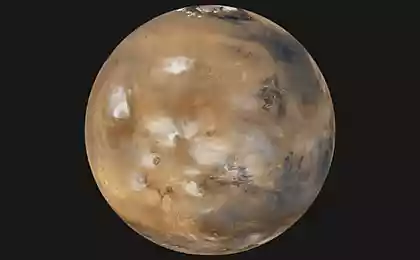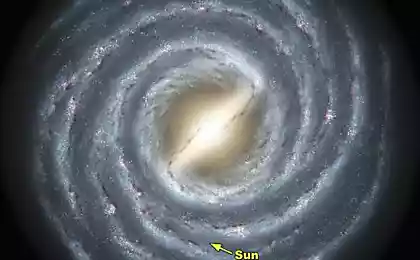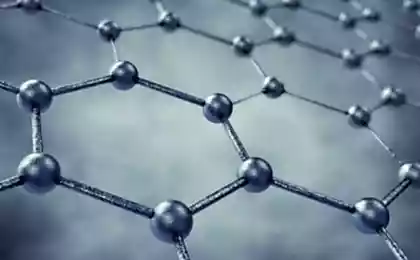681
In our Solar system could be other planets

Long before he formed mercury, Venus, Earth and Mars within the Solar system could be nesting other super-earths — planets larger Land, but less than Neptune. If so, those days are long gone, the planet was defeated and fell to the Sun billions of years ago, due to the movement of Jupiter in our youth system.
This scenario was proposed by Konstantin Batygin, a planetary scientist at Caltech, and Gregory Laughlin University of California Santa Cruz, in a paper published recently in the proceedings of the National Academy of Sciences (PNAS). The results of their calculations and modeling indicate the possibility of existence of other paintings of the early Solar system, which could answer a number of unresolved issues about the current composition of the Solar system and the Earth itself. For example, the new work asks the question, why do the terrestrial planets in the Solar system of relatively low mass compared to planets orbiting other sun-like stars.
"Our work shows that the migration of Jupiter inward could destroy the first generation of planets and to create the conditions for the formation of the poor mass of the terrestrial planets that make up our Solar system today," says Batygin, assistant Professor of planetary science. — "All this nicely fits to the recent discoveries on how developed the Solar system". The image below is the model created over Caltech and its branch to Santa Cruz, which shows a young Solar system when Jupiter was probably carried out inside the great migration (the orbit of Jupiter is presented with a thick white circle). As you move inside, Jupiter picked up the primitive building blocks of planets, or planetesimals, and drove them on eccentric orbits (cyan) that are superimposed on the untouched part of the planetary disk (yellow), initiating the cascade of collisions that would push any of the inner planets on the Sun.
Thanks to a recent study of exoplanets, i.e. planets that are in other systems, we know that about half of the sunlike stars in our galaxy have planets in their orbits. However, these systems are not similar to our own. In our Solar system, very little within the orbit of mercury, except for small debris but no planets there. This contrasts strongly with the fact that astronomers observe on the examples of other planets in most planetary systems. These systems typically have one or more planets, which is more massive than Earth and closer to the Sun than mercury.

"In fact, it seems that the Solar system is unusual compared to the rest. Our system is special, says Batygin. But there is no reason to believe that in our system the formation of planets gone wrong, as always. It would be reasonable to assume that further changes affected the overall look." According to batygina and Lawline, Jupiter is critical for understanding how the Solar system came to its present form. Their model includes the so-called Grand Tack scenario ("the great change of course"), first proposed in 2001 by scientists of the University of London and revised in 2011 by a team of the Observatory of nice. Under this scenario, in the first few million years of life in the Solar system when planetary bodies were in the disk of dust and gas around a relatively young Sun, Jupiter was so massive and took possession of so powerful a gravity that punched a hole in the disk. And while the Sun was pulled in by the drive toward you, Jupiter pulled it out.
"Jupiter continued to influence this zone is gradually approaching the Sun," says Batygin. Saturn formed later than Jupiter, but began to move towards the Sun faster. Once the two massive planets were close enough, they were locked in a special kind of relationship — orbit resonance when their orbital periods began to be expressed as a ratio of integers. In the orbital resonance 2:1 Saturn has completed two orbits around the Sun while Jupiter has completed one. In this respect the two bodies began to exert a gravitational effect on each other."This resonance allowed the two planets to form a gap in the disk and exchange angular momentum and energy," says Batygin. In the end, all came to the conclusion that all of the gas between the two worlds was ousted and sent, and the migration of the planets began in the opposite direction. That is, the planet has migrated inward, and then abruptly changed course, like a boat, made it past the buoy. In an earlier model developed by Bradley Hansen of Caltech, the terrestrial planets have stayed in their current orbits with the current mass under certain circumstances — when all the planetesimals of the inner Solar system formed in a narrow ring in the range 0.7-1 and. that is from the Sun (1 and. E. average distance from the sun to the Earth) after 10 million years after the formation of the Sun. In the Grand Tack scenario, the outer edge of this ring is outlined Jupiter during the movement to the Sun and cleanse the gap in the disk on the way to the present orbit of the Earth.
What about the inside edges? Why planetesimals should be limited to the inner ring? This point was not raised, says Batygin.
He argues that the answer may lie in the original supersense. An empty hole of the inner Solar system almost precisely matches the orbital area, in which super-earths are commonly found near other stars. It is therefore reasonable to assume that this region was cleared by the group of planets of the first generation that simply did not survive.
Calculations and modeling of electrically and Lowline show that as Jupiter moved in, he pulled all the planetesimals in its path due to the orbital resonances and carried them to the Sun. And when these planetesimals came closer to the Sun, their orbits became elliptical.
"You can't reduce the size of its orbit, simply because increased ellipticity", — says Batygin. These new elongated orbits has led to the fact that the planetesimals within 100 miles have gone through a pristine area of the disk and marked the beginning of the cascade of collisions among the debris. Every planetesimal collided with another object at least once for every 200 years, violently smashing it apart and sending it into the Sun. Scientists have conducted simulations, which showed what could happen with the generation of supertall in the inner Solar system if they participated in this cascade of collisions. For example, have "Kepler-11", including six supertall with a total mass 40 times greater than earth's. The model showed that these super-earths would have gone to the Sun under a hail of planetesimals in just 20,000 years.
This is a very effective physical process, says Batygin. Just need a few earth masses of material to send the planet in the tens of earth mass to the Sun.
Batygin notes that when Jupiter has sucked all around, some of the planetesimals remain on circular orbits. And only 10% of the material we had to leave in order to form the modern mercury, Venus, Earth and Mars.
From this point on it took millions of years, these planetesimals stuck together and eventually formed the terrestrial planets — this scenario fits well with measurements, which suggests that Earth was formed 100-200 million years after the birth of the Sun. This could also explain why Earth's atmosphere is little hydrogen — the primary disk of hydrogen and helium at the time of formation of the Earth has dried up. Our planet is gathered from a poor fin.
That's why it's different from most exoplanets. Most of them are super-earths have atmospheres of hydrogen, because it was formed at some point in the evolution of their planetary disk, when gas was enough. Also it would follow that planets similar to Earth, not very common.
The document also suggests that the formation of gas giants like Jupiter and Saturn is a process that is quite rare from the point of view of the planetary community — plays an important role in the definition, there's a planetary system similar to ours or not.published
Source: hi-news.ru
Everything you need to know about celery
Angelina Jolie has officially filed for divorce from brad pitt























